The 1995 SEC Fraud
Computerland, Merisel, and Vanstar as told by their programmer
Topics from Elections to Qaudruple Homicides to Missing Children
BRUCE G. VANYO, State Bar # 060134
LAURIE B. SMILAN, State Bar # 116740
DAVID PRIEBE, State Bar # 148679
MICHELE E. ROSE, State Bar # 154656
SUSAN BOWER, State Bar # 173244
WILSON SONSINI GOODRICH & ROSATI
Professional Corporation
650 Page Mill Road
Palo Alto, California 94304-1050
Telephone: (650) 493-9300
Attorneys for Defendants
UNITED STATES DISTRICT COURT
NORTHERN DISTRICT OF CALIFORNIA
DAVID T. O'NEAL TRUST, DATED 4/1/77
and TAMMY NEWMAN, On Behalf of
Themselves and All Other Similarly Situated, Plaintiffs, v. VANSTAR CORPORATION, RICHARD H.
BARD, WILLIAM Y. TAUSCHER, JAY S.
AMATO, ROBERT C. KUNTZENDORF,
JEFFREY S. RUBIN, RICHARD N.
ANDERSON, CHRIS M. LANEY,
MICHAEL J. MOORE, AHMAD
MANSHOURI, COLEMAN D. SISSON,
THANOS M. TRIANT, E.M. WARBURG,
PINCUS & CO., INC., WARBURG PINCUS
& CO., L.P., STEWART K. P. GROSS,
WILLIAM H. JANEWAY and JOHN L.
VOGELSTEIN, Defendants.
______________________________________ | )
)
)
)
)
)
)
)
)
)
)
)
)
)
)
)
)
)
)
)
)
)
) | CASE NO.: C-98-0216-MJJ CLASS ACTION MEMORANDUM OF POINTS
AND AUTHORITIES IN
OPPOSITION TO
PLAINTIFFS' MOTION TO
STRIKE EXHIBITS
SUBMITTED IN SUPPORT
OF DEFENDANTS' MOTION
TO DISMISS
[filed c. Oct. 23, 1998] Date: November 3, 1998
Time: 9:30 a.m.
Court: Honorable
Martin J. Jenkins |
INTRODUCTION
Plaintiffs have moved to strike certain documents submitted with Vanstar's motion to dismiss: Vanstar's 1997 Form 14A ("Form 14A") and a calculation of stock sales by Vanstar's officers and directors ("Appendix"), which is taken directly from publicly filed SEC documents upon which plaintiffs rely. Plaintiffs argue that these documents are "outside" the Complaint, and therefore cannot be considered on a motion to dismiss. Plaintiffs also argue that the documents constitute inadmissible hearsay.
Plaintiffs' arguments are ill-founded. Under the Private Securities Litigation Act of 1995, plaintiffs must plead specific facts giving rise to a strong inference of each defendant's required state of mind (i.e., scienter), or the Complaint must be dismissed. Plaintiffs attempt to plead scienter by arguing that the individual defendants' stock sales were unusual or suspicious. The documents in question simply assist the Court in analyzing the judicially noticeable information provided by plaintiffs. Courts in securities class action cases routinely take judicial notice of SEC filings -- including documents which demonstrate that stock sale allegations are false -- and will dismiss allegations which are inconsistent with the filings. It is contrary to the Reform Act, and palpably unfair, for plaintiffs to claim that the documents must be excluded from the Court's consideration, while at the same time averring that their stock sale allegations taken from the same documents, which may be judicially noticed, give rise to a strong inference of scienter. Thus, the Court should deny plaintiffs' motion; or, if the Court is inclined to strike these documents, it should also strike plaintiffs' stock sale allegations.
Moreover, the documents are not "outside" the Complaint as they deal directly with allegations in the complaint. The law is clear that the mere fact that plaintiffs neglect to attach documents integral to their complaint does not render such documents "outside" a complaint, nor preclude the Court from considering the documents in a motion to dismiss. The Form 14A reveals the stock ownership of Vanstar's most senior management, ownership that is at the heart of plaintiffs' scienter allegations. Likewise, the Appendix was prepared directly from the Forms 3 and 4 filed with the SEC, which plaintiffs clearly used in drafting the Complaint (there is no other ultimate source from which plaintiffs could have obtained otherwise confidential information regarding the individual defendants' stock sales and holdings). Plaintiffs cannot seriously complain about a chart that was prepared to assist the Court in analyzing judicially noticeable information that was first provided by plaintiffs.
Plaintiffs' hearsay objection also is misplaced. Plaintiffs waived any such objection by choosing to include in their Complaint stock sale allegations in the first instance. Moreover, to the extent the Form 14A is referenced for the truth of the matters asserted therein, it is admissible under the business records exception to the hearsay rule. Finally, as plaintiffs themselves admit, the documents at issue were not offered solely for their truth value: rather, they are also offered to indicate the individual defendants' state of mind., i.e., were they selling or retaining significant portions of their net worth in the securities of the Company.
ARGUMENT
I. THE COURT MAY TAKE JUDICIAL NOTICE OF THE DOCUMENTS
A. Courts Routinely Take Judicial Notice of SEC Filings.
When deciding motions to dismiss, courts routinely take judicial notice of, or otherwise consider, documents other than the complaint.1 Indeed, the great weight of authority holds that SEC filings are properly considered when deciding a motion to dismiss, and that those filings are properly the subject of judicial notice. See, e.g., Wenger v. Lumisys, Inc., 2 F. Supp. 2d 1231, 1240 n.8 (N.D. Cal. 1998) (denying plaintiff's motion to strike documents filed with the SEC, specifically Form 4s showing the actual number of shares sold during the class period); In re Silicon Graphics Securities Lit., 970 F. Supp. 746, 758 (N.D. Cal. 1997) (court may take judicial notice of the contents of relevant public disclosure documents required to be filed with the SEC) (quoting Kramer v. Time Warner, Inc., 937 F.2d 767, 774 (2d Cir. 1991)); In re Gupta Corp. Sec. Litig., 900 F. Supp. 1217, 1228 (N.D. Cal. 1994) ("[T]he court may review 'public disclosure documents required by law to be and which actually have been filed with the SEC.'") (quotation omitted); Shaw v. Digital Equipment Corp., 82 F.3d 1194, 1206 n. 13, 1220 (1st Cir. 1996) ("In deciding a motion to dismiss a securities action, a court may properly consider the relevant entirety of a document integral to or explicitly relied upon in the complaint, even though not attached to the complaint, without converting the motion into one for summary judgment."); Lovelace v. Software Spectrum Inc., 78 F.3d 1015, 1018 (5th Cir. 1996) ("When deciding a motion to dismiss a claim for securities fraud on the pleadings, a court may consider the contents of relevant public disclosure documents which (1) are required to be filed with the SEC and (2) are actually filed with the SEC.").2
B. Courts May Take Judicial Notice of Documents "Outside" the Complaint.
Plaintiffs also assert that the subject documents do not fall within the scope of judicial notice because they are "outside" the Complaint. See Plaintiffs' Brief at 3-4. It is well settled, however, that a document need not be attached to a complaint in order for a court to properly consider it when deciding a motion to dismiss. In re Syntex Corp. Sec. Litig., 95 F.3d 922, 926, 929 (9th Cir. 1996) ("When deciding a motion to dismiss, a court may consider the complaint and 'documents whose contents are alleged in a complaint and whose authenticity no party questions, but which are not physically attached to the pleading.'") (quoting Branch v. Tunnell, 14 F.3d 449, 454 (9th Cir. 1994)).3
Here, the authenticity of the subject documents is not truly disputed, and their contents are integral to the Complaint. The Form 14A reveals the stock ownership of Vanstar's senior most management and plaintiffs have made this ownership a central issue of the Complaint. Likewise, the Appendix was prepared directly from the Forms 3 and 4 which are the exact documents plaintiffs used to draft the Complaint.4 All that Defendants have done here is present the same judicially noticeable, integral information plaintiffs have included in their Complaint in such a way as to assist the Court.5
II. THE SUBJECT DOCUMENTS ARE NOT INADMISSIBLE HEARSAY
Plaintiffs contend that even if the exhibits are properly the subject of judicial notice, the Court may not consider them because they may not be submitted to disprove scienter and because they constitute hearsay. See Plaintiffs' Brief at 4-6. Plaintiffs similarly argue that cases which have judicially noticed SEC filings have only taken judicial notice of the fact that the documents were filed or where the misrepresentations were contained in those documents. Id. at 4-5. For three reasons, plaintiffs are wrong.
First, as shown above, plaintiffs themselves have alleged the truth of the matters asserted in the documents. Their Complaint alleges that the individual defendants sold particular amounts of stock, at particular prices, on particular dates. It also alleges that the individual defendants sold particular (albeit inflated) percentages of their stock holdings. Complaint ¶¶ 138-141. Thus, plaintiffs cannot complain if and when Defendants refer to the same SEC filings, or information extracted from the filings for the truth of the matters asserted therein. This is precisely the reason that courts have taken judicial notice of stock sales in securities cases. See Silicon Graphics, 970 F. Supp. at 759 ("Having raised questions about defendants' stock sales, [and] based their allegations on defendants' SEC filings . . . plaintiffs can hardly complain when defendants refer to the same information in their defense."); Wenger at 1240 n.8 (denying plaintiff's motion to strike documents filed with the SEC, specifically Form 4s showing the actual number of shares sold during the class period); see also United States v. Anderson, 532 F.2d 1218, 1229 (9th Cir. 1976) (defendant who introduced hearsay statement waived objection).
Second, the exhibits are offered not only for their truth value, but also to demonstrate the state of mind of the individual defendants. As such, they are excepted from the hearsay rule. Fed. R. Evid. 803(3). Plaintiffs admit that these documents would demonstrate state of mind, if accepted by the Court. Pl. Br. at 6. Plaintiffs attempt to plead the individual defendants' state of mind by asserting that each of them intended to sell unusual amounts of Vanstar stock, rather than retaining his or her shares and stock options. Thus, the documents are relevant to plaintiffs' state of mind theory.
Third, the Form 14A is admissible under the business records exception to the hearsay rule. See Fed. R. Evid. 803(6). For a memorandum or record to be admissible as a business record, it must be: (1) made by a regularly conducted business activity; (2) kept in the "regular course" of that business; (3) "the regular practice of that business to make the memorandum, and (4) made by a person with knowledge or from information transmitted by a person with knowledge." Clark v. City of Los Angeles, 650 F.2d 1033, 1036-37 (9th Cir. 1981) (quoting Fed. R. Evid. 803(6). The Form 14A was prepared by persons with knowledge of the facts contained therein, kept in the ordinary course of Vanstar's business, and required by law to be prepared and submitted to the SEC. Moreover, Vanstar relied on the preparation of those documents in its business; it was required by law to disclose proxy and officer stock sale information. Accordingly, all of the requisites of the business records exception are satisfied. See United States v. Childs, 5 F.3d 1328, 1333 (9th Cir. 1993) (documents properly admitted as business records notwithstanding defendant's objections that the circumstances surrounding preparation of documents indicated a lack of trustworthiness, and that documents were not made in regular course of business); United States v. Bland, 961 F.2d 123, 126-27 (9th Cir. 1992) (firearm registration form required by law properly admitted as business record; "the person completing [the form] had knowledge of the transaction at the time it occurred and [the document] was maintained as a regularly conducted business activity as required by law."); Keogh v. Commissioner of Internal Revenue, 713 F.2d 496, 499 (9th Cir. 1983) (card dealer's diary containing personal financial records properly admitted as business record; "Witlock's diary, even though personal to him, shows every indication of being kept 'in the [ordinary] course of' his own 'business activity,' 'occupation, and calling.' . . . The reliability usually found in records kept by business concerns may be established in personal business records if they are systematically checked and regularly and continually maintained.").
III. IT WOULD BE CONTRARY TO THE REFORM ACT TO STRIKE THE DOCUMENTS
Under the heightened pleading requirements of the Reform Act, plaintiffs must allege facts sufficient to create a strong inference of scienter on the part of each defendant. See Securities Exchange Act of 1934 §§21D(b)(2), (3), 15 U.S.C. §§78 u-4(b)(2), (3). Plaintiffs attempt to meet this burden to plead the individual defendants' state of mind by arguing that those persons engaged in unusual or suspicious trading. Plaintiffs' Mem. of Points & Auth. in Opposition to Defendants' Motion to Dismiss at 19-21. Nevertheless, plaintiffs contend that the actual stock sale information included in the Defendants' exhibits should not be considered.
Plaintiffs are wrong. As the Reform Act imposes an affirmative duty on plaintiffs to present a complaint that provides a strong inference of scienter, it is only logical that "plaintiffs bear the burden of showing that any such sales are in fact unusual," when they rely on stock sale allegations to plead scienter. In re Health Mgm't Sys., Inc. Sec. Litig., No. 97-CIV-1865(HB), 1998 U.S. Dist. LEXIS 8061, at *18 (S.D.N.Y. May 28, 1998). Thus, plaintiffs cannot merely plead their conclusion that the stock sales are "suspicious" or "unusual." Instead, they must plead information indicating (1) the number of shares and options each defendant retained, and (2) each defendants' past pattern of sales, so that the "suspicious" or "unusual" nature of the sales in question can be discerned. Securities Exchange Act of 1934 §§21D(b)(1), (2), 15 U.S.C. §§ 78u-4(b)(1), (2) (Reform Act requires plaintiffs to set forth the factual basis of allegations made on information and belief).
Thus, the Court is entitled to take judicial notice of those documents to determine if, as the Vanstar Defendants allege, they refute plaintiffs' allegations. In re Silicon Graphics, Inc. Sec. Litig., 970 F. Supp. 746, 751 (N.D. Cal. 1997 ("[T]he court need not accept as true allegations that contradict facts that have been judicially noticed."). Conversely, if the exhibits are not considered, neither should plaintiffs' stock sale allegations. See, e.g., Duncan v. Pencer, 1996 WL 19043, at *12 (S.D.N.Y. 1996) (absent stock sale information, no inference of unusual or suspicious sales may be drawn).
CONCLUSION
For the reasons set forth above, the motion to strike should be denied in its entirety; or, if the Court is inclined to strike the Subject Documents, it should also strike plaintiffs' stock sale allegations.
Dated: October __, 1998 | WILSON, SONSINI, GOODRICH & ROSATI By:___________________________________
Susan Bower
Attorneys for Defendants |
1 See, e.g., Kottle v. Northwest Kidney Centers, 146 F.3d 1056, 1064 n. 7 (9th Cir. 1998) (declining to treat Rule 12(b)(6) motion as summary judgment motion despite district court's consideration of affidavit whose "sole purpose was to put before the Court certain public records of the Department" for which court could take judicial notice); Emrich v. Touche Ross & Co., 846 F.2d 1190, 1198 (9th Cir. 1988) (declining to treat Rule 12(b)(6) motion as summary judgment motion despite district court's consideration of declaration requesting judicial notice of certain matters in public record, including other related proceedings).
2 Plaintiffs' citation to In re Sun Microsystems, Inc. Sec. Lit., No. C-89-20351, 1990 U.S. Dist. LEXIS 18740 (N.D. Cal. Aug. 20, 1990), in support of their argument that the Court may not take judicial notice of the documents in question is more than a little misleading: the Court in that case declined to take judicial notice of certain SEC filings because the relevant SEC filings already were attached to the complaint by plaintiffs, and hence no judicial notice of those documents was necessary. Id. at *6. It is also curious that plaintiffs would cite Haltman v. Aura Systems, Inc., 844 F. Supp. 544, 550 (C.D. Cal. 1993), as the Court in that case merely decided that it could dismiss plaintiffs' claims without the necessity of reviewing the documents submitted for judicial notice.
3 See also In re Stac Elecs. Sec. Litig., 89 F.3d 1399, 1405 n. 4 (9th Cir. 1996) ("[D]ocuments whose contents are alleged in a complaint and whose authenticity no party questions, but which are not physically attached to the pleading may be considered in ruling [under] Rule 12(b)(6) Motion to Dismiss.") (quotation omitted); Fecht v. Price Co., 70 F.3d 1078, 1080 n.1 (9th Cir. 1995); In re Verifone Sec. Litig., 11 F.3d 865, 868 n.2 (9th Cir. 1993); Branch, 14 F.3d at 453 ("The leading commentators state that 'when [the] plaintiff fails to introduce a pertinent document as part of his pleading, [the] defendant may introduce the exhibit as part of his motion attacking the pleading.'") (quoting 5 Charles A. Wright & Arthur R. Miller, Federal Practice and Procedure: Civil ' 1327, at 762-63 (2d ed.1990)).
4 Plaintiffs admit that they reviewed Vanstar's SEC filings in drafting their Complaint. Complaint ¶ 160. In any event, any contention that the stock trading data alleged in the Complaint was obtained from sources other than Forms 4s is highly implausible (and no such other sources are disclosed). If Vanstar and its officers had not been required to disclose their trades and stock holdings in the SEC filings, the information would be protected from disclosure by the Article I of the California Constitution. Silicon Graphics, 970 F. Supp. at 758 (the trading "allegations can be derived only from the[] publicly-filed documents," any credible financial publications themselves must derive information concerning the personal financial affairs of executives from the SEC filings).
5 Nor may plaintiffs contend that they genuinely dispute the accuracy of the exhibits at issue. The purpose of judicial notice is to avoid unnecessary costs associated with establishing a fact that "is not really disputable." 1 Weinstein's Evidence ¶ 201[03] at 201-24 (1996). Courts have rejected such attempts to circumvent the principles of judicial notice. See Silicon Graphics, 970 F. Supp. at 758 (rejecting theory where plaintiffs' challenge to accuracy of SEC forms submitted by the defendant was "weak," and there was no evidence presented which would cast doubt on those filings). Moreover, the Ninth Circuit has held that judicial notice may be taken of matters less trustworthy than SEC filings, where the matter is "capable of sufficiently accurate and ready determination." In Ritter v. Hughes Aircraft Co., 58 F.3d 454 (9th Cir. 1995), the Court held that the district court properly took judicial notice of widespread layoffs at Hughes Aircraft based on a newspaper article: "judicial notice of layoffs at Hughes was not an abuse of discretion [because] [t]his is a fact which would be generally known in Southern California and which would be capable of sufficiently accurate and ready determination." Id. at 458-59.
Source: File to epost from Wilson Sonsini Goodrich & Rosati
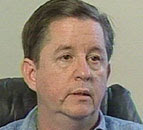

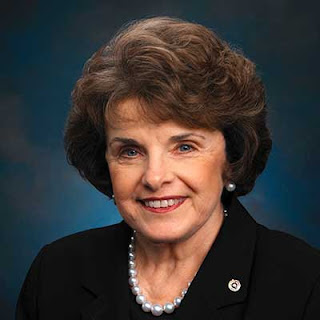
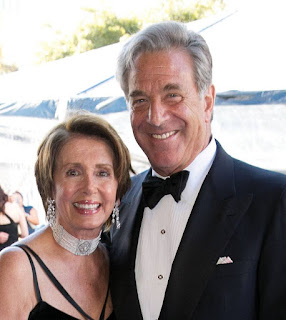
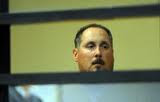
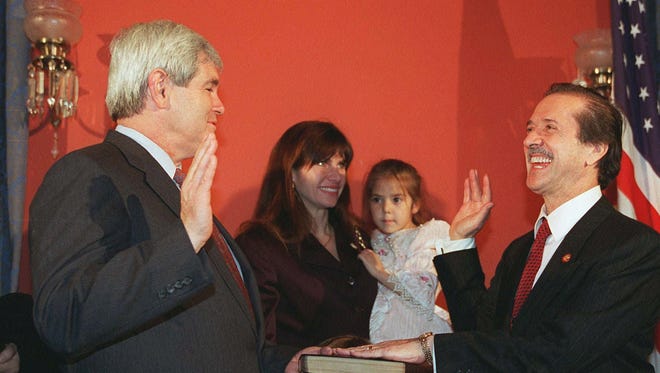
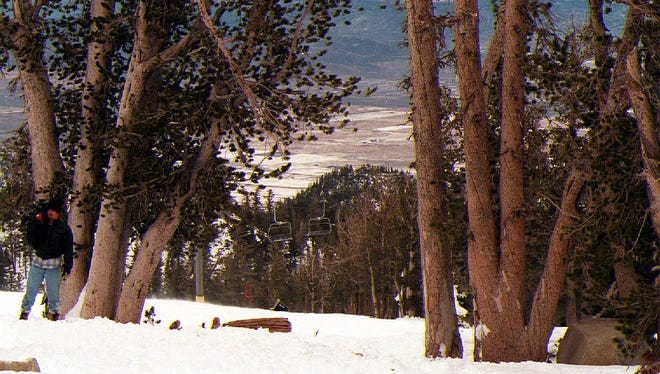
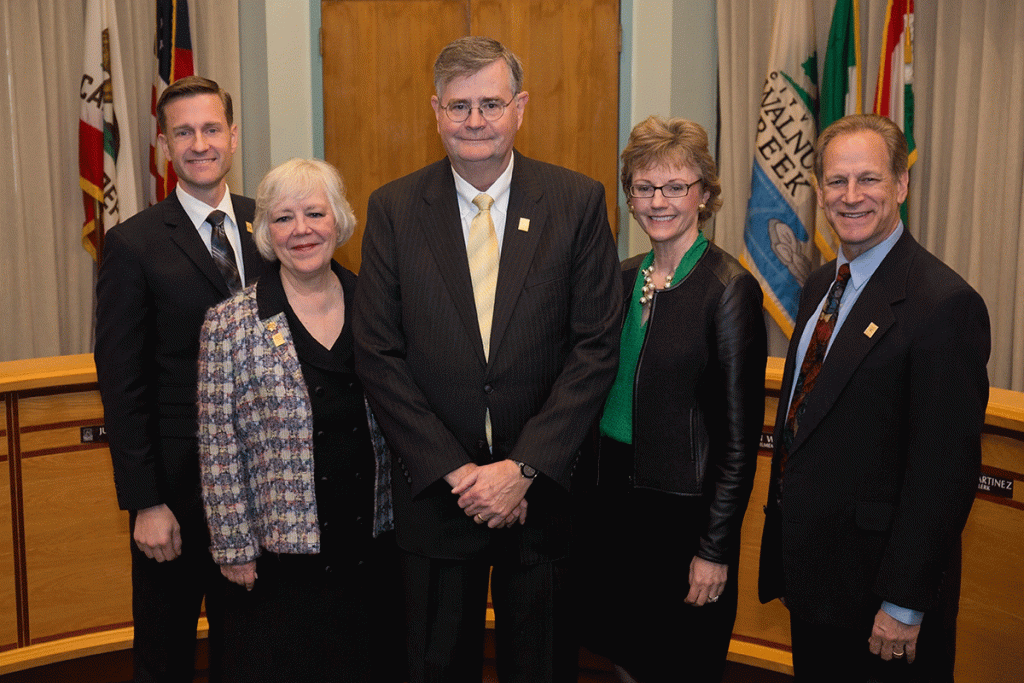 Matching Donors to Candidates - you can see when you read enough
Matching Donors to Candidates - you can see when you read enough





